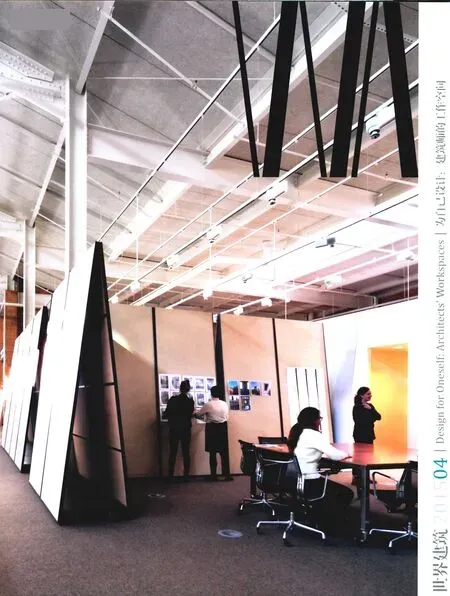ADA研究中心现代建筑研究所,北京,中国
建筑设计:王昀
ADA研究中心现代建筑研究所,北京,中国
建筑设计:王昀

1 轴测图/Isometric drawing
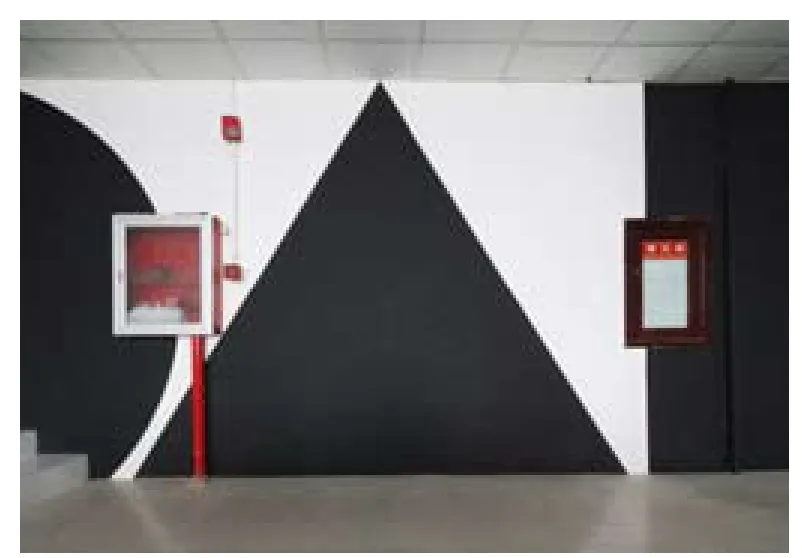
2 入口墙面手绘/Wall painting at the entrance
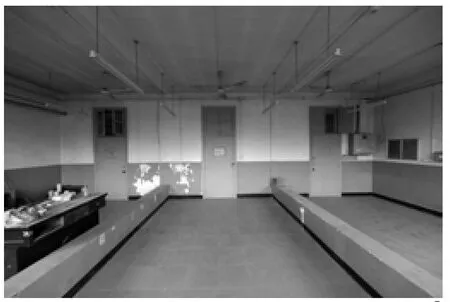
3 改造之前的实验教室/Laboratory room before renovation
一个“白盒子”的植入
由王昀创建并主持的ADA研究中心现代建筑研究所位于北京西城区北京建筑大学科研楼的4层。这栋建筑建于1950年代,采用传统的设计语言。研究所改造面积65.5m2。
在这个改造项目中,以功能作为形式的直接表达。在一个既存的中国传统建筑中,植入一个可以展开现代建筑研究工作的空间,可容纳12人同时展开相关的研究和设计工作。
由于该空间原作为实验室使用,为了相关的力学需求结构设置了两道地梁,从而使室内空间被分为3段。为了应对标高的变化,改造时采用架空地板的方式将地面高度统一。在65.5m2的空间内设置有咖啡角、会议讨论区、工作区、主持人研讨空间4个部分。空间上引入聚落式的“回路”空间结构将各功能区加以联系,同时,为了解决抬高后的室内地面与公共走廊间标高差的问题,入口处左侧设置了梯段,右侧是一个坡道,形成具有丰富感受变化的街道空间。改造中架空地面同时带来的另一问题就是窗台无法满足防护高度的要求。设计中利用一个水平线状的隔板解决防护问题的同时,提供了可配合吧凳的工作台,供人员较多时使用。房间四周采用书柜作为背景和隔断。暖气是原有管道,进行简单的涂抹后形成一种自由的状态。由于空间较小,所以采用明亮、简单的白色涂料。房间对着公共走廊的原有立面是绿色墙围子,墙面上有许多杂乱的配电箱和消火栓。立面处理中采用“圆”、“三角”、“正方形”3个几何体所构成的巨大壁画,提出了现代建筑研究所主张的同时,将杂乱、琐碎、有着不同装饰的小物件统一到一个整体的几何图案系统中。
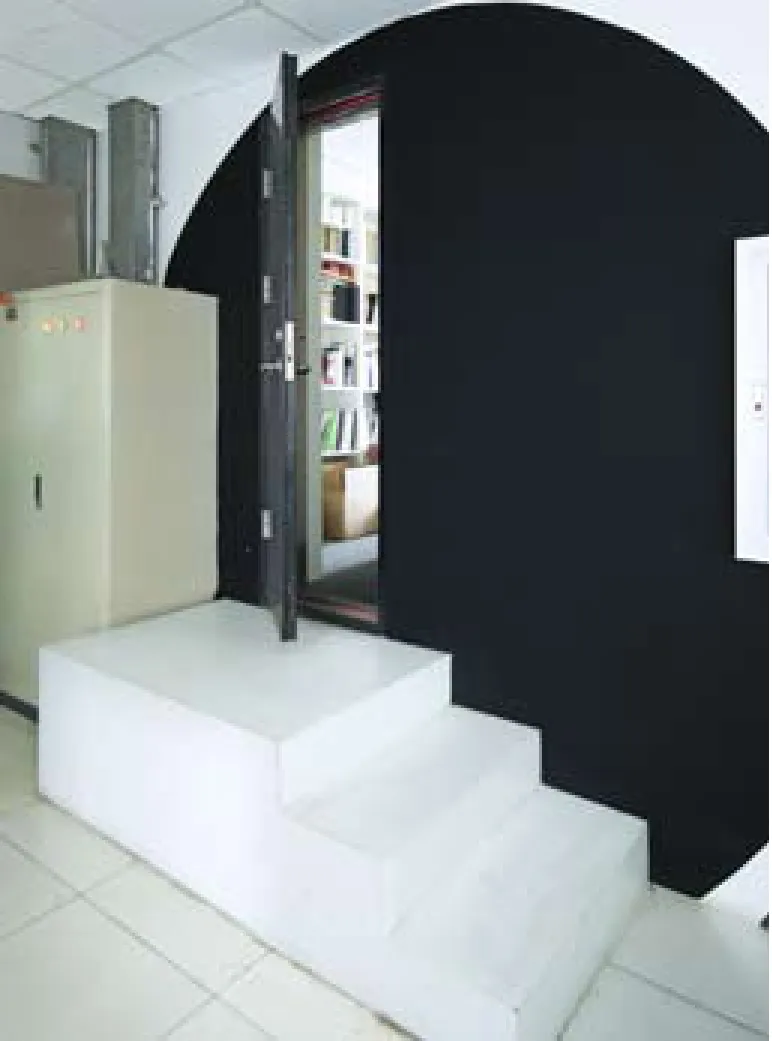
4 壁画上的门/Door on the wall painting
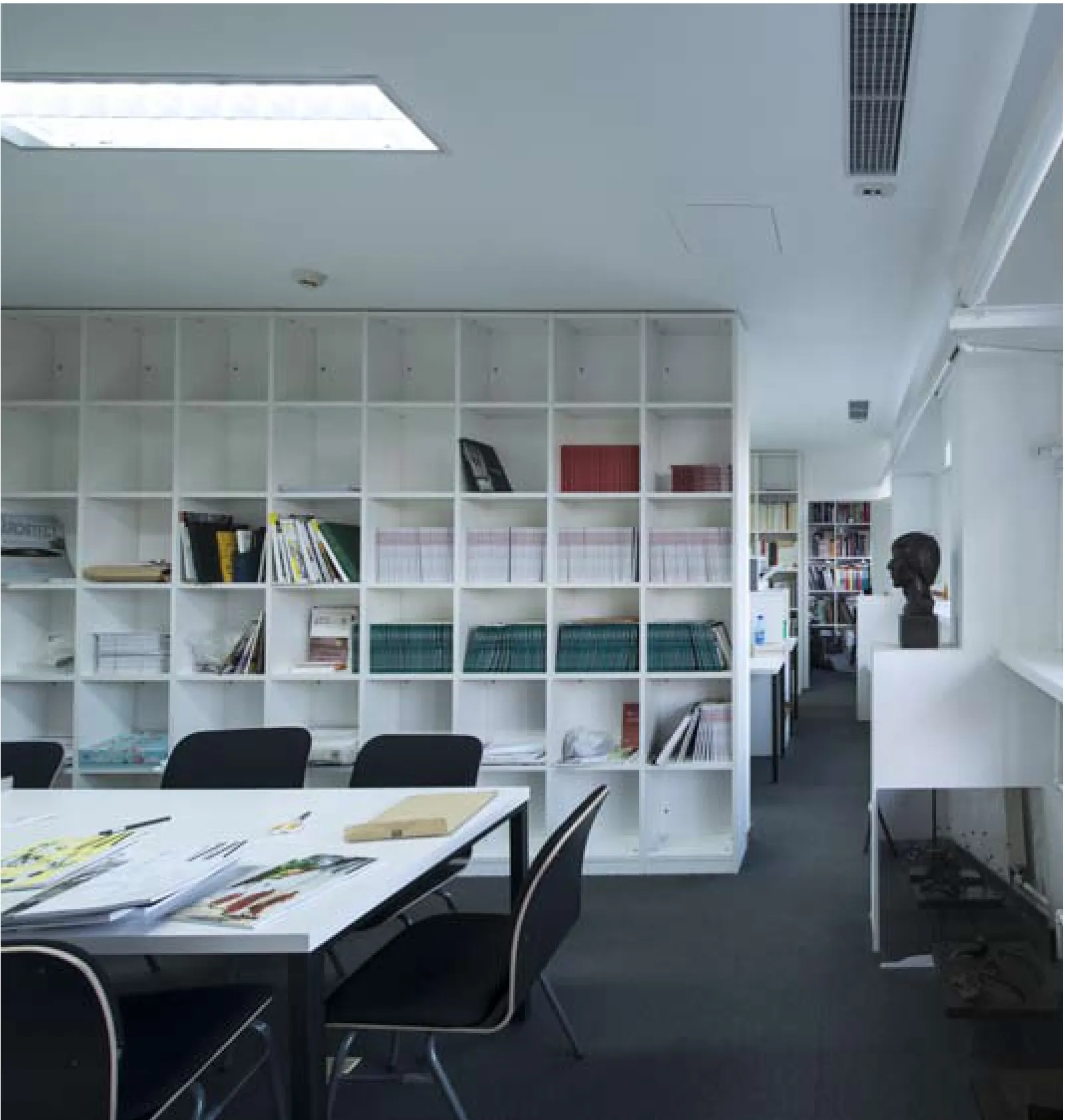
5 沿窗一侧的“街道”/"Street" along the windows
项目信息/Credits and Data
项目位置/Location: 北京建筑大学科研楼/the Research Building of BUCEA
主创建筑师/Principal Architect: 王昀/WANG Yun
设计团队/Design Team: 张捍平/ZHANG Hanping
建筑面积/Floor Area:65.5m2
设计时间/Design Period: 2013.07
建成时间/Completion: 2013.10
摄影/Photos: 北京建筑大学ADA研究中心/BUCEA Graduate School of Architecture Design and Art
An Implanted "White Box"
The ADA Modern Architecture Research Institute founded and chaired by Wang Yun, is located on the fourth floor of the Research Building of the Beijing University of Civil Engineering and Architecture, Xicheng District, Beijing, covering an area of 65.5m2. Built in the 1950s, the Research Building adopted traditional design vocabulary.
For this renovation project, function is taken as a direct expression of form. A space for modern architectural research is implanted into a preexisting traditional Chinese building, in which 12 persons can do design and research at the same time.
Since the space was used as a laboratory, two beams were set up out of mechanical and structural concerns, thus dividing the interior space into three sections. In response to changes in elevation, the ground level is unified by elevating the ground floor during the renovation. Within the 65.5m2space, there are four areas used respectively for café, meeting, working, and hosting seminars. A "Hui (a Chinese character comprising two square loops)" spatial structure is introduced to link various functional areas. To handle the elevation difference between the elevated interior floor and the public corridor, steps are constructed on the left side of the entrance, and a slope path on the right side, forming a kind of street space with a rich variety of perspectives. In the meanwhile, the elevated ground level results in another issue, i.e. the height of the sill cannot meet the requirements of security. The horizontal partition is designed not only to solve the issue of protection, but also to provide a workbench in case of a large quantity of customers. Bookshelves are used as backdrops and partitions around the room. With simple paint, the original heating pipes are displayed in a state of freedom. The wall is painted white due to the small space. the original facade of the research office facing the public corridor was green, on which there were a lot of distribution boxes and fire hydrants. To handle this issue, a grand wall painting comprising "circle", "triangle", and "square" geometries is installed to show the gist of a modern architectural research institute advocates, while incorporating all the messy, trivial, and various small decorative objects into a unified geometric system. (Translated by LI Min)
评论
郑方:王昀设计的ADA现代建筑研究所当然是白色的——均匀柔和的光线从实验室原有的3个窗漫射进来,界定了工作空间的氛围和质量。工作台和会议桌放置在中心,外围有一个环形的路径。因为实验室结构梁的限制,这条游走的路径开始于入口的3个小台阶,之后一侧是工作区,另外一侧分别经过靠墙的书架、通长的悬空窗台板、狭窄的墙壁间的短坡道,加上不同时间、不同地点光线的定义,再连接工作室内部的3个小台阶,从而形成一个真正意义上的现代设计。虽然不比萨伏伊别墅的路径,或者库哈斯和霍尔创建的公共路径的多变性和复杂性,但是在如此狭小的工作室中引入现代建筑的基本原型,随意而为,毫不做作,确实令人钦佩。
张昕楠:范·艾克曾断言——宅即城,城亦宅。在ADA现代建筑研究所这个65.5m2的紧凑“聚落”,当咖啡、会议、工作、研讨4个部分并置到这个不大的空间之后,剩余的部分便成为了一个“徊游之径”;功能区域分割所带来的开敞、狭涩、连续、停顿的空间体验,处理敏感高差所带来的或激烈或和缓的行走乐趣,都在这一“徊游之径”中得到了解读。而入口处的“○△”图案和拼贴处理,不但暗示出研究所的名称,更以一种当代的方式将时空中存在的真实信息进行设计整合为和谐的空间图景。
Comments
ZHENG Fang: The ADA Modern Architecture Research Institute designed by WANG Yun is, of course, in white: the even and soft daylight flows into the interior space through three windows of the original laboratory, which determines the atmosphere and quality of the working space. At the center are drafting boards and a conference table, surrounding which is a mini "promenade". Limited by the structural beam on the lab ground, the route started from three small steps at the entrance. then, with the one side as the working zone, the other side of the route extends passing the bookshelves against the wall, the long suspended window sill, the narrow short ramp between walls, and is connected to the other three small steps inside the studio – with the variation of light at different time in different zones, a truly modern design is therefore accomplished. the route design may not be as varied and complicated as that of the Villa Savoye or the public route established by Rem Koolhaas or Steven Holl, yet the free, unpretentious introduction of a basic paradigm of modern architecture into such a small studio space is in itself quite impressive.
ZHANG Xinnan: Aldo Van Eyck once stated: "house is city and city is house." Within this compact "settling colony" of 65.5m2, what was left from the placements of the four functioning sections (used respectively for coffee, discussion, work, and seminar) formed a "wandering loop". Within this "loop", the spatial experiences of openness, enclosure, consistency and intermission brought by the segments of space, along with the intense or mild delight in walking created when answering the relatively subtle elevational difference are all well interpreted. The wall painting at the entrance comprising "○△" geometries and its collage approach not only imply the name of the institute, but also adopt a modern language to integrate the authentic elements in time and space into a balanced physical prospect.
Modern Architecture Research Institute, ADA, BUCEA, Beijing, China, 2013
Architect: WANG Yun

7 工作区/Working area
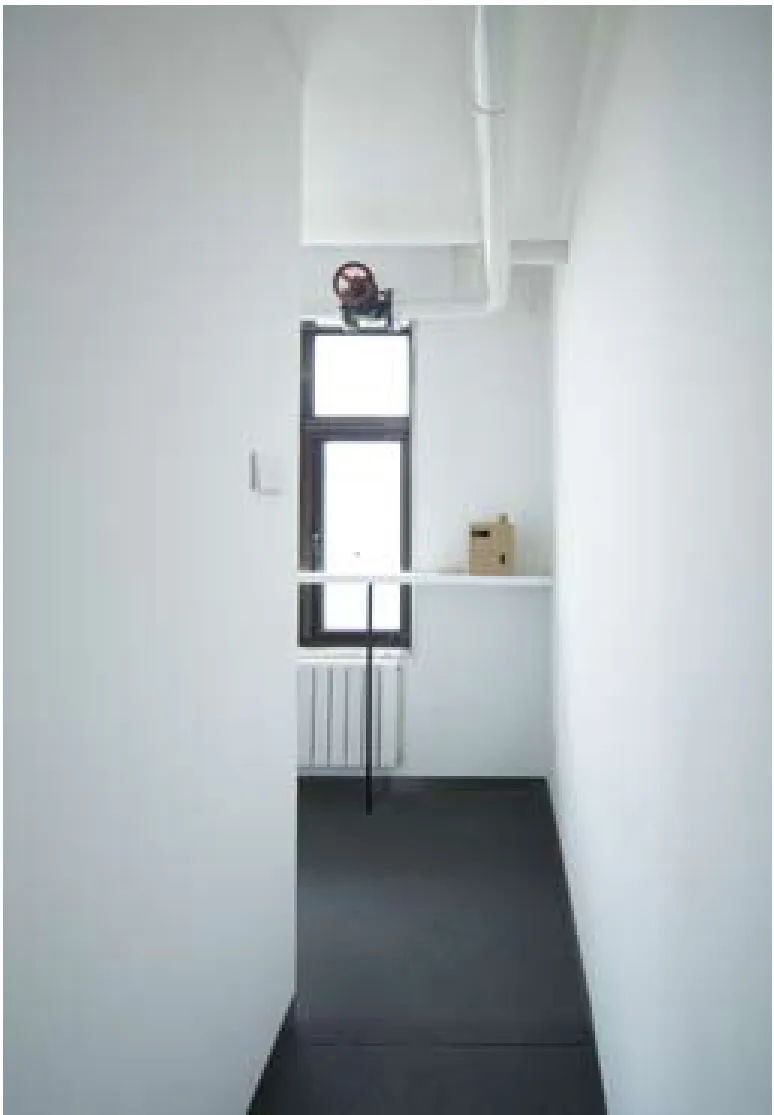
8 坡道/Ramp
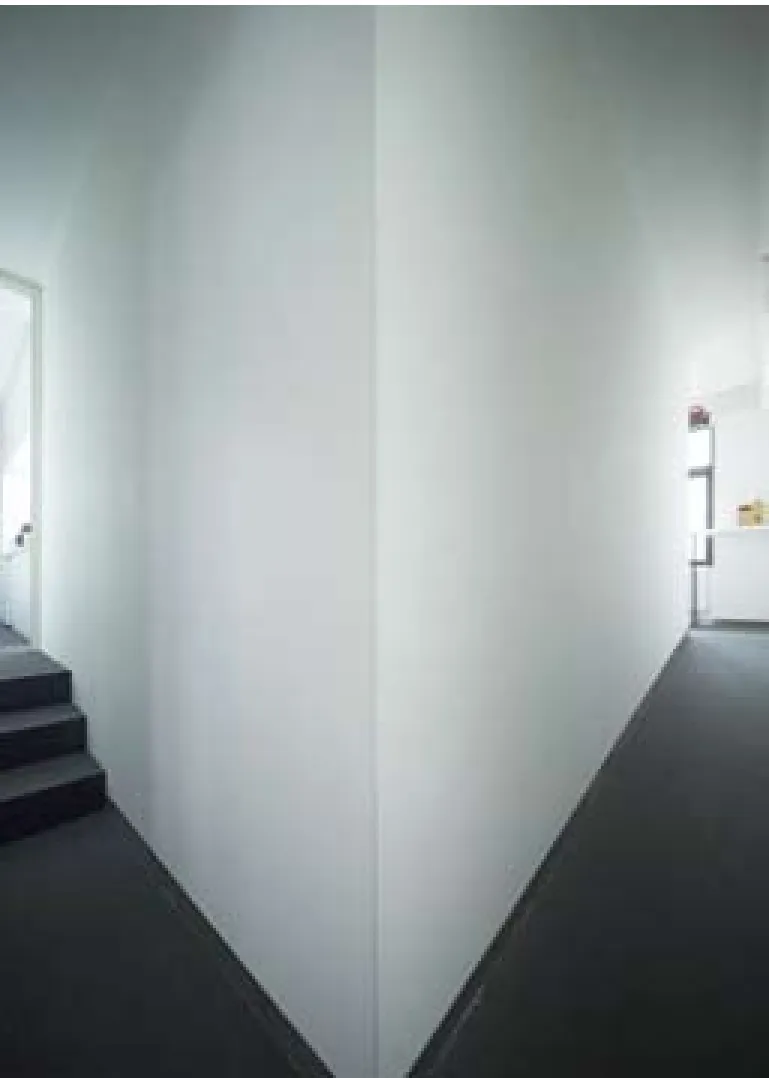
9 两条路径交汇的转角处/Intersection of two paths

